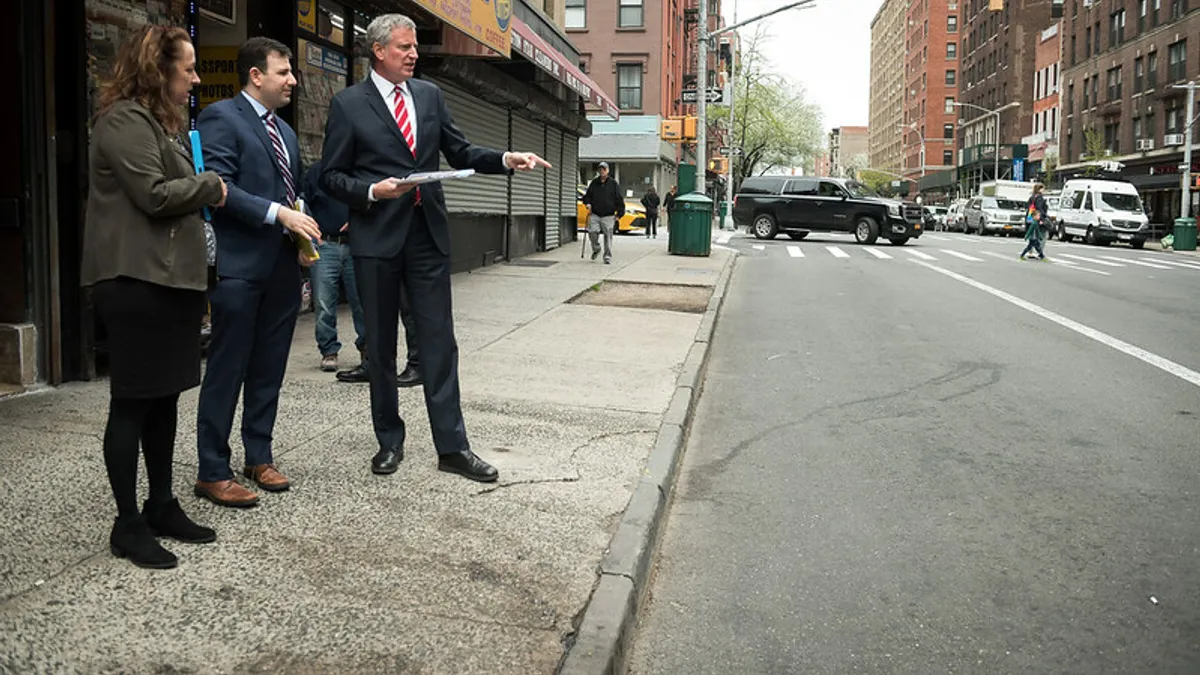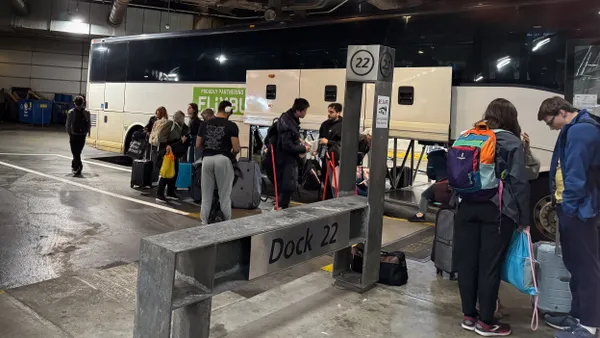Dive Brief:
- New York has announced measures to increase mobility within the city and complement the recently approved congestion pricing plan, set to take effect in early 2021.
- The three initiatives are: a detailed plan for how the city's Department of Transportation will implement the Bus Action Plan, which will increase bus speeds 25% by 2020; tripling the number of businesses transitioning to off-hours deliveries; and identifying pedestrian priority spaces in Lower Manhattan.
- The measures will become part of OneNYC, the city's sustainability and resiliency strategy.
Dive Insight:
New York Mayor Bill de Blasio discussed the city's intention to speed up buses 25% by 2020 during his state of the city address in January. At that time, he talked about doubling the pace of installing dedicated bus lanes and doubling the number of intersections that get green light priority. Days after that, he said the city will crack down on illegal parking in bus lanes. Other newly announced steps include extending and installing bus turn bays at select locations, constructing sidewalks to make bus stops, adding turn arrows on traffic signals to help buses make turns, moving bus stops to better locations and making pedestrian improvements.
Better curb space management is a large part of all three portions of the overall plan. It's most prevalent in the measure focused on increasing the number of off-hours deliveries. Urban residential areas present delivery challenges because they often have narrow streets insufficient for passing. The problem is only projected to worsen as residents' e-commerce service use continues to climb.
Similarly, deliveries in commercial areas during business hours are challenging due to the dense concentration of people. Logistics companies report that traffic congestion is one of their top two concerns about operating in urban areas. Although loading zones help delivery efficiency in commercial areas, they are not always adequate for accommodating the need. New York launched its Off-Hour Deliveries Program a decade ago, encouraging goods to be delivered from 7 p.m to 6 a.m. to reduce double parking, traffic congestion and truck emissions. The city's new initiative involves tripling the number of participating locations from 500 to 1,500.
The final new measure is to identify locations in Lower Manhattan to serve as pedestrian priority streets. Many streets there — especially in the financial district — are narrow and easily become overcrowded. The city will look into solutions including changing street parking regulations and daytime events.
Mobility is a complex issue that covers a lot of ground and includes many transportation modes as well as forms of infrastructure. New York's new measures tackle the issue on several fronts at once instead of focusing on only one area, which could cause an incomplete solution.












